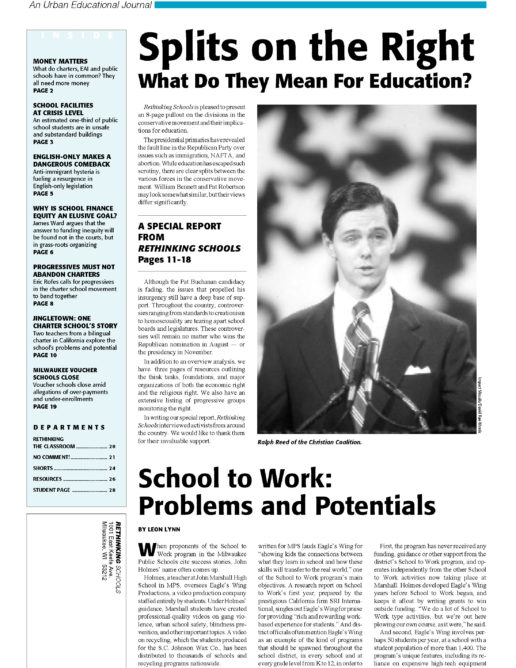Preview of Article:
School Facilities at Crisis Level
Reflections from An Old School House
Substandard school facilities across the country affect millions of children. A 1995 report estimates $112 billion is needed to bring those schools up to minimal standards.

